Entry Database : PDB / ID : 5iy4Title Crystal structure of human PCNA in complex with the PIP box of DVC1 DVC1 PIP box Proliferating cell nuclear antigen Keywords / / / Function / homology Function Domain/homology Component
/ / / / / / / / / / / / / / / / / / / / / / / / / / / / / / / / / / / / / / / / / / / / / / / / / / / / / / / / / / / / / / / / / / / / / / / / / / / / / / / / / / / / / / / / / / / / / / / / / / / / / / / / / / / / / / / / / / / / / / / / / / / / / / / / / / / / Biological species Homo sapiens (human)synthetic construct (others) Method / / / Resolution : 2.945 Å Authors Jiang, T. / Xu, M. / Wang, Y. Funding support Organization Grant number Country Strategic Priority Research Program XDB08010301
Journal : Biochem.Biophys.Res.Commun. / Year : 2016Title : Crystal structure of human PCNA in complex with the PIP box of DVC1Authors : Wang, Y. / Xu, M. / Jiang, T. History Deposition Mar 24, 2016 Deposition site / Processing site Revision 1.0 Jun 8, 2016 Provider / Type Revision 1.1 Sep 27, 2017 Group / Derived calculations / Category / pdbx_struct_oper_listItem / _pdbx_struct_oper_list.symmetry_operationRevision 1.2 Nov 8, 2023 Group / Database references / Refinement descriptionCategory chem_comp_atom / chem_comp_bond ... chem_comp_atom / chem_comp_bond / database_2 / pdbx_initial_refinement_model Item / _database_2.pdbx_database_accessionRevision 1.3 Oct 30, 2024 Group / Category / pdbx_modification_feature
Show all Show less
 Yorodumi
Yorodumi Open data
Open data Basic information
Basic information Components
Components Keywords
Keywords Function and homology information
Function and homology information Homo sapiens (human)
Homo sapiens (human) X-RAY DIFFRACTION /
X-RAY DIFFRACTION /  SYNCHROTRON /
SYNCHROTRON /  MOLECULAR REPLACEMENT / Resolution: 2.945 Å
MOLECULAR REPLACEMENT / Resolution: 2.945 Å  Authors
Authors China, 1items
China, 1items  Citation
Citation Journal: Biochem.Biophys.Res.Commun. / Year: 2016
Journal: Biochem.Biophys.Res.Commun. / Year: 2016 Structure visualization
Structure visualization Molmil
Molmil Jmol/JSmol
Jmol/JSmol Downloads & links
Downloads & links Download
Download 5iy4.cif.gz
5iy4.cif.gz PDBx/mmCIF format
PDBx/mmCIF format pdb5iy4.ent.gz
pdb5iy4.ent.gz PDB format
PDB format 5iy4.json.gz
5iy4.json.gz PDBx/mmJSON format
PDBx/mmJSON format Other downloads
Other downloads 5iy4_validation.pdf.gz
5iy4_validation.pdf.gz wwPDB validaton report
wwPDB validaton report 5iy4_full_validation.pdf.gz
5iy4_full_validation.pdf.gz 5iy4_validation.xml.gz
5iy4_validation.xml.gz 5iy4_validation.cif.gz
5iy4_validation.cif.gz https://data.pdbj.org/pub/pdb/validation_reports/iy/5iy4
https://data.pdbj.org/pub/pdb/validation_reports/iy/5iy4 ftp://data.pdbj.org/pub/pdb/validation_reports/iy/5iy4
ftp://data.pdbj.org/pub/pdb/validation_reports/iy/5iy4
 Links
Links Assembly
Assembly
 Components
Components Homo sapiens (human) / Gene: PCNA / Production host:
Homo sapiens (human) / Gene: PCNA / Production host: 
 X-RAY DIFFRACTION / Number of used crystals: 1
X-RAY DIFFRACTION / Number of used crystals: 1  Sample preparation
Sample preparation SYNCHROTRON / Site:
SYNCHROTRON / Site:  SSRF
SSRF  / Beamline: BL18U1 / Wavelength: 0.9776 Å
/ Beamline: BL18U1 / Wavelength: 0.9776 Å Processing
Processing MOLECULAR REPLACEMENT
MOLECULAR REPLACEMENT Movie
Movie Controller
Controller




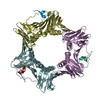

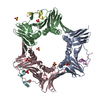

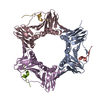
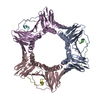
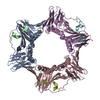


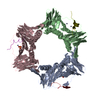
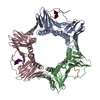
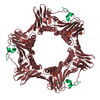
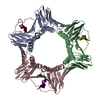

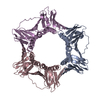

 PDBj
PDBj















